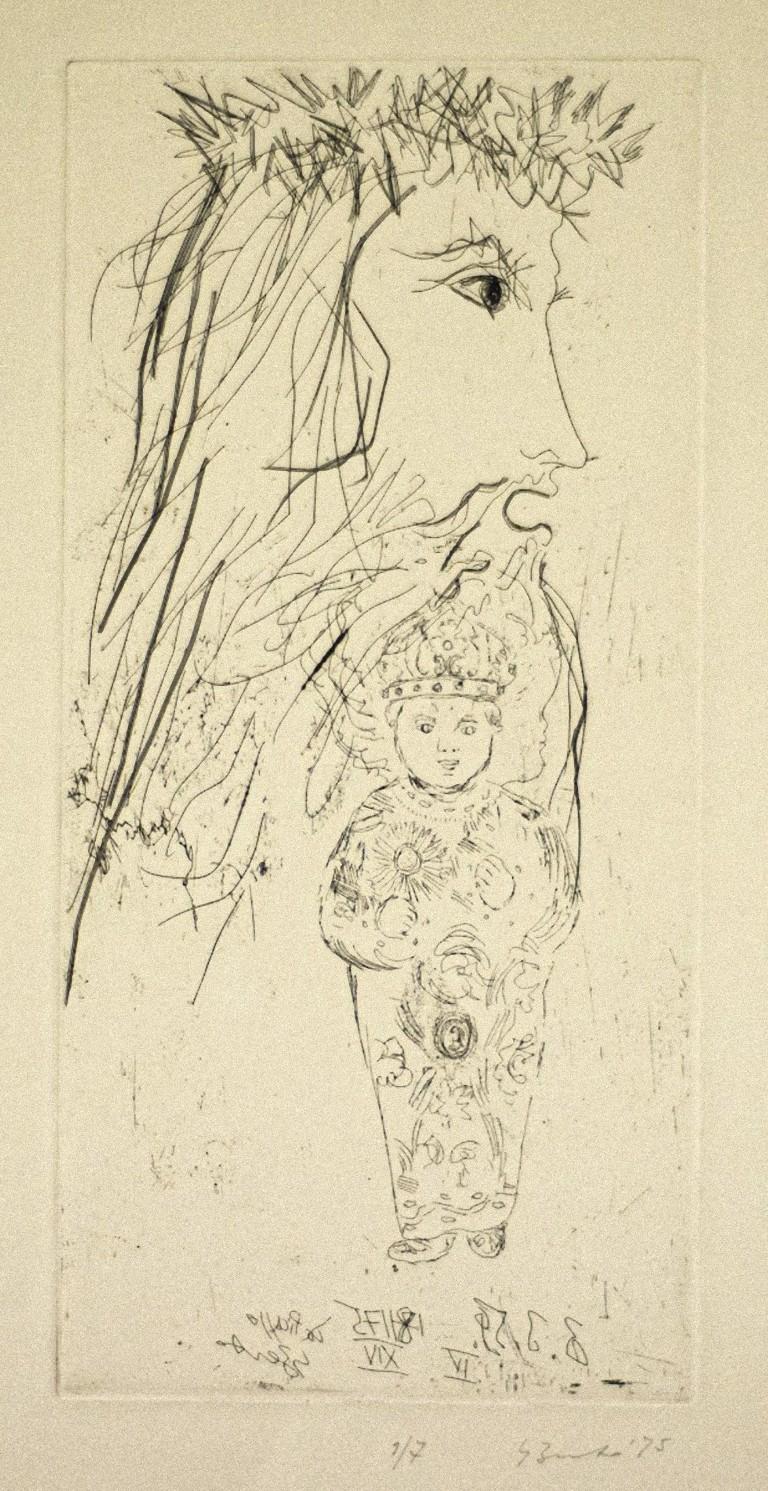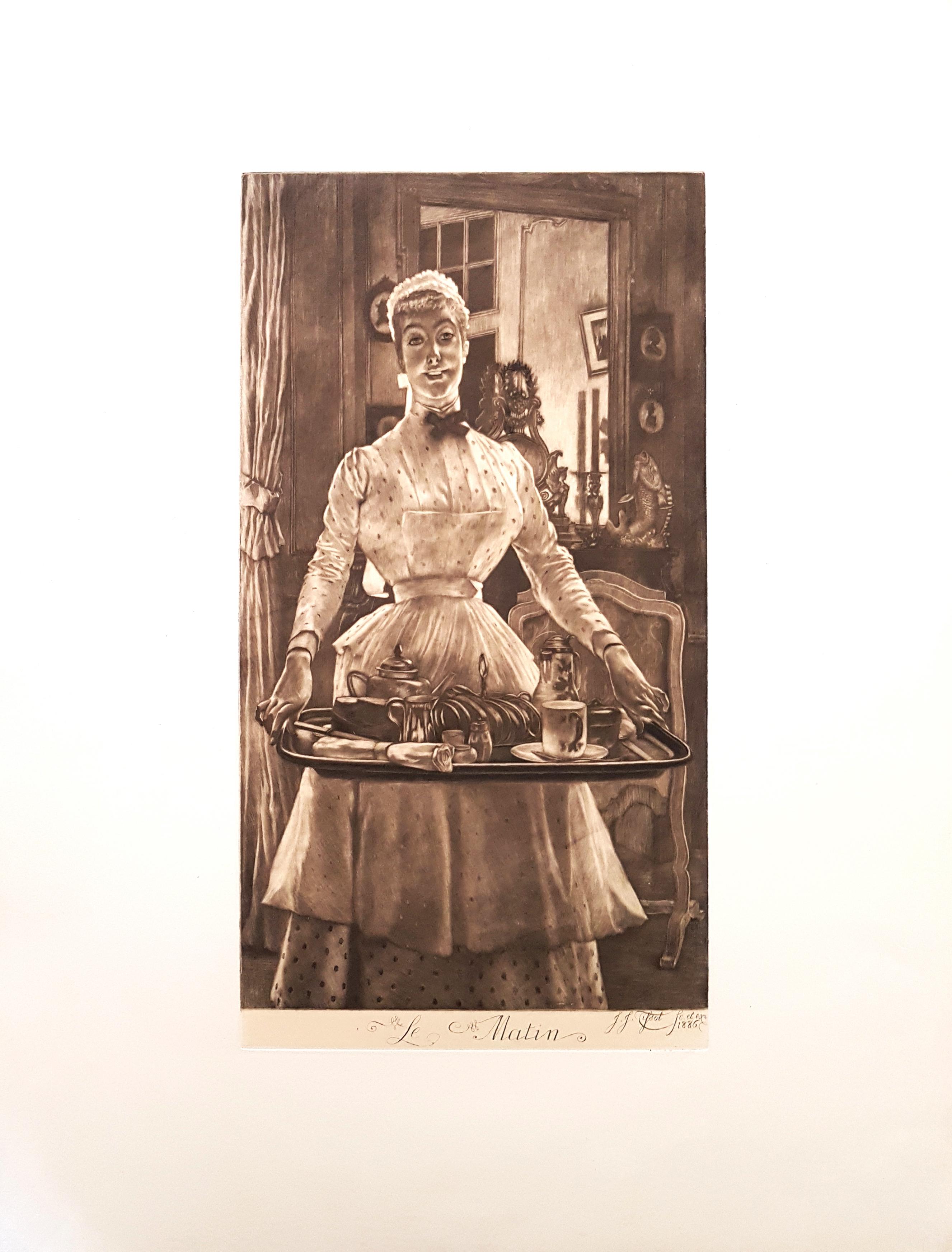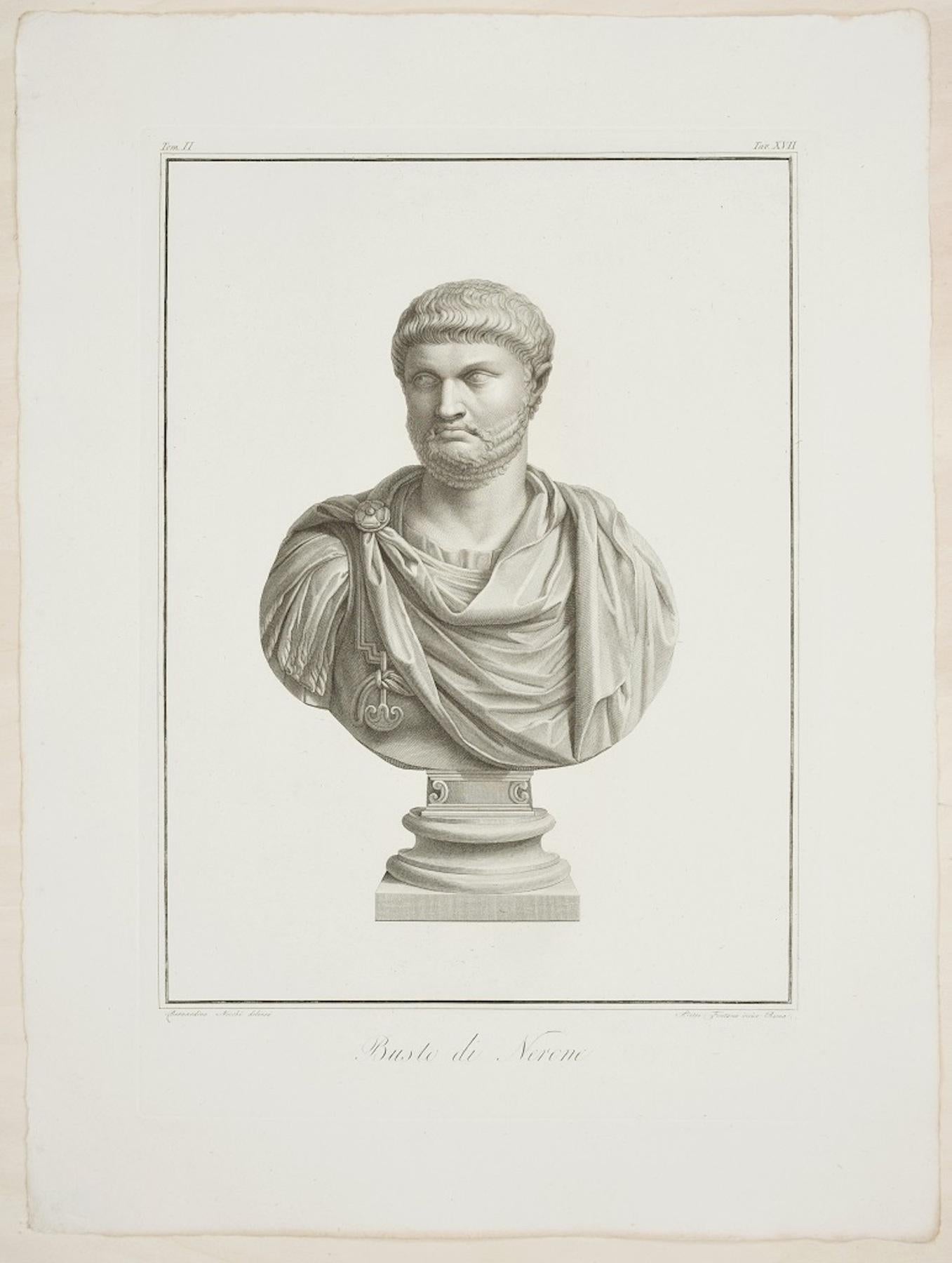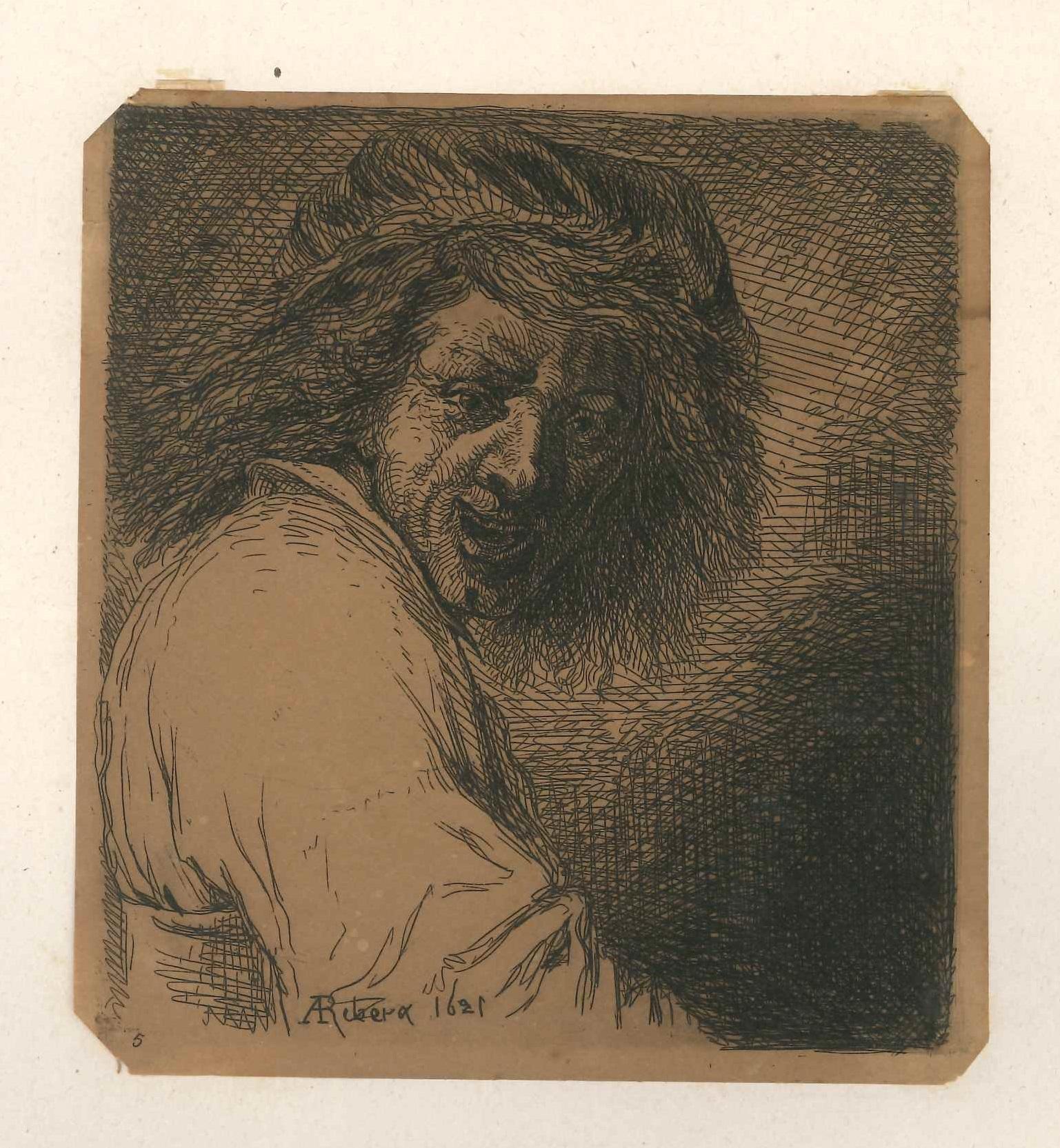Salvador DalíRembrandt
About the Item
- Creator:Salvador Dalí (1904 - 1989, Spanish)
- Dimensions:Height: 12 in (30.48 cm)Width: 10 in (25.4 cm)
- Medium:
- Movement & Style:
- Period:
- Condition:
- Gallery Location:Missouri, MO
- Reference Number:1stDibs: LU747314093812
Salvador Dalí
Instantly recognizable by his waxed, upturned mustache, the flamboyant Salvador Dalí is one of modern art’s most distinctive figures. He is also one of the icons of the 20-century avant-garde Surrealist movement, whose dreamlike images, drawn from the depths of the unconscious, he deployed in paintings, sculptures, prints and fashion, as well as in film collaborations with Luis Buñuel and Alfred Hitchcock.
Dalí was born in Figueres, Catalonia, and even as a youngster, displayed the sensitivity, sharp perception and vivid imagination that would later define his artworks. In these, he conjured childhood memories and employed religious symbols and Freudian imagery like staircases, keys and dripping candles to create unexpected, often shocking pieces.
Dalí's use of hyperrealism in conveying Surrealist symbols and concepts that subvert accepted notions of reality is epitomized in what is perhaps his most recognizable painting, The Persistence of Memory (1931), in which he depicts the fluidity of time through melting clocks, their forms inspired by Camembert cheese melting in the sun. His artistic genius, eccentric personality and eternal quest for fame made him a global celebrity.
“Each morning when I awake, I experience again a supreme pleasure,” he once said. “That of being Salvador Dalí.”
Find original Salvador Dalí paintings, prints, sculptures and other works on 1stDibs.
- ShippingRetrieving quote...Ships From: Missouri, MO
- Return PolicyA return for this item may be initiated within 2 days of delivery.
- "Mlle Landsberg" (grade planche, pl. 16)By Henri MatisseLocated in Missouri, MO"Mlle Landsberg" (grade planche, pl. 16), 1914 Henri Matisse (French, 1869-1954) Signed and Numbered Lower Right Edition 12/15 Image size: 7 7/8 x 4 5/16 inches Sheet size: 17 11/16 x 12 1/2 inches With frame: 19 1/2 x 14 1/2 inches Henri Matisse came from a family who were of Flemish origin and lived near the Belgian border. At eight o'clock on the evening of December 31, 1869, he was born in his grandparents' home in the town of Le Cateau in the cheerless far north of France. His father was a self-made seed merchant who was a mixture of determination and tightly coiled tension. Henri had no clear idea of what he wanted to do with his life. He was a twenty-year-old law clerk convalescing from appendicitis when he first began to paint, using a box of colors given to him by his mother. Little more than a year later, in 1890, he had abandoned law and was studying art in Paris. The classes consisted of drawing from plaster casts and nude models and of copying paintings in the Louvre. He soon rebelled against the school's conservative atmosphere; he replaced the dark tones of his earliest works with brighter colors that reflected his awareness of Impressionism. Matisse was also a violinist; he took an odd pride in the notion that if his painting eye failed, he could support his family by fiddling on the streets of Paris. Henri found a girlfriend while studying art, and he fathered a daughter, Marguerite, by her in 1894. In 1898 he married another woman, Amelie Parayre. She adopted the beloved Marguerite; they eventually had two sons, Jean, a sculptor and Pierre who became an eminent art dealer. Relations between Matisse and his wife were often strained. He often dallied with other women, and they finally separated in 1939 over a model who had been hired as a companion for Mme. Matisse. She was Madame Lydia, and after Mme. Matisse left, she remained with Matisse until he died. Matisse spent the summer of 1905 working with Andre Derain in the small Mediterranean seaport of Collioure. They began using bright and dissonant colors. When they and their colleagues exhibited together, they caused a sensation. The critics and the public considered their paintings to be so crude and so roughly crafted that the group became known as Les Fauves (the wild beasts). By 1907, Matisse moved on from the concerns of Fauvism and turned his attention to studies of the human figure. He had begun to sculpt a few years earlier. In 1910, when he saw an exhibition of Islamic art, he was fascinated with the multiple patterned areas and adapted the decorative universe of the miniatures to his interiors. As a continuation of his interest in the "exotic", Matisse made extended trips to Morocco in 1912 and 1913. At the end of 1917, Matisse moved to Nice; he would spend part of each year there for the remainder of his life. A meticulous dandy, he wore a light tweed jacket amd a tie when he painted. He never used a palette, but instead squeezed his colors on to plain white kitchen dishes...Category
1910s Fauvist Figurative Prints
MaterialsEtching, Drypoint
- The Hymn SingerBy Thomas Hart BentonLocated in Missouri, MOSigned in Pencil Lower Right Ed. 500 Circulated by Twayne Publishers, New York City Image Size: 16 x 12 3/8 Framed Size: 24 1/4 x 20 1/2 inches The legendary actor actor and musici...Category
1950s American Realist Portrait Prints
MaterialsLithograph
- Canyon Road, Sante FeBy Will (William Howard) ShusterLocated in Missouri, MOCanyon Road, Santa Fe By. William Howard Shuster (American, 1893-1969) Signed Lower Right Edition of 100 Lower Center Titled Lower Left Unframed: 4" x 4.75" Framed: 15.75" x 15.25" A realist and early modernist painter, graphic artist, illustrator, and sculptor, Will Shuster became known primarily for his work in New Mexico where in 1920, he settled in Santa Fe, having been encouraged to come there by John Sloan. He had studied electrical engineering at the Drexel Institute in Philadelphia and later was a student of Sloan's in Santa Fe in both etching and painting. He was in World War I, where he suffered a gas attack. On his return, he studied with J William Server in Philadelphia but was advised to go West for his health. In Santa Fe in 1921, he became one of the founding members of Los Cinco Pintores...Category
20th Century American Modern Landscape Prints
MaterialsEtching
- l Teatro delle MaschereBy Marino MariniLocated in Missouri, MOMarino Marini "ll Teatro delle Maschere" 1973 Lithograph Signed and Numbered Ed. 25 Sheet Size: approx 27.5 x 39 inches Framed Size: approx 35 x 47 inches Marino Marini (February 27...Category
1970s Modern Figurative Prints
MaterialsEtching, Aquatint
- Moa-Na-Hon-Ga, Great Walker, An Ioway ChiefBy McKenney & HallLocated in Missouri, MOMOA-NA-HON-GA. GREAT WALKER. AN IOWAY CHIEF., from History of the Indian Tribes of North America Artist:Charles Bird King Publisher:McKenney and Hall hand-colored engraving on paper ...Category
1830s American Realist Portrait Prints
MaterialsEngraving
- Qua-Ta-Wa-Pea or Col. Lewis. A Shawnee Chief.By McKenney & HallLocated in Missouri, MOMCKENNEY, Thomas L. (1785-1859) and James HALL (1793-1868) Qua-Ta-Wa-Pea or Col. Lewis. A Shawnnee Chief. Philadelphia: E.C. Biddle, 1836. Hand-coloured lithograph. Image size (including text): 14 3/8 x 10 inches. Sheet size: 20 x 14 1/8 inches. Framed size: 24 x 20 3/8 A fine image from McKenney and Hall's 'Indian Tribes of North America': `One of the most important [works] ever published on the American Indians' (Field),` a landmark in American culture' (Horan) and an invaluable contemporary record...Category
1830s Portrait Prints
MaterialsLithograph
- Portrait - Original Etching on Paper - 1930sLocated in Roma, ITPortrait is an original print on paper realized by an Anonymous artist in the 1930s. Original etching on paper. Good conditions except for ...Category
1930s Modern Figurative Prints
MaterialsEtching
- Portrait - Etching by Claudin Felix - 19th centuryLocated in Roma, ITPortrait is an original artwork realized by Claudin Felix (1875-1956). Original etching. Image Dimensions: 19.5 x 16 cm. Good conditions except for some foldings. The artwork rep...Category
19th Century Modern Figurative Prints
MaterialsEtching
- King David - Etching on Paper by Gian Paolo Berto - 1975Located in Roma, ITKing David is an original etching on paper realized by Gian Paolo Berto, in 1975. Good conditions. Hand-signed and numbered, rare edition: 1/7. Sheet dimension: 70 x 50 The artwo...Category
1970s Modern Figurative Prints
MaterialsEtching
- Le Matin - Etching by James Tissot - 1886By James TissotLocated in Roma, ITWonderful mezzotint and etching on China paper applied. The inscription reads: "Le matin/ J. J. Tissot Sc. et ex. 1886". Titled, signed and dated on plate on the lower margin, below ...Category
1880s Modern Figurative Prints
MaterialsEtching, Aquatint
- Bust of Nero - Original Etching by P. Fontana After B. Nocchi - 1821By Pietro FontanaLocated in Roma, IT“Busto di Nerone” (Bust of Nerone) is a beautiful black and white burin and etching on paper, realized by the Italian artist Pietro Fontana, after Bernardino Nocchi as the inscriptions on plates on lower margins report “Bernardino Nocchi delineò./ Pietro Fontana incise Roma”. This original print is numbered on plate in Roman numerals on higher margin: “Tom II. /Tav. XVII" and is a plate from the series "Illustrazioni de'Monumenti scelti Borghesiani già esistenti nella Villa sul Pincio (..)date ora per la prima volta in luce dal cav. Gio. Gherardo De Rossi e da Stefano Piale sotto la guida di Vincenzo Feoli", by Ennio Quirino Visconti, published by Stamperia de Romanis in Rome, 1821. This old master’s original prints shows a precious piece of the Borghese's collection, the marble bust of the Roma Emperor, Nerone, realized with neoclassical style and a wise touch In excellent conditions with some light signs of the time, with some sporadic minor stains along the margins above all on the lower, and a usual yellowing of the paper on the lower margin, this wonderful burin has preserved still today his fresh impression. Illustrazioni de' Monumenti scelti Borghesiani This collection in two volumes is a beautifully detailed catalog of classical sculptures collected by Prince Borghese (1730-1800) in his Villa on the Pincio. Ennio Quirino Visconti (1751 - 1818) wrote the texts that accompany the large branches depicting. To these writings, which were available by the son of the illustrious archaeologist, the publishers added only a few illustrations relating to some minor monument of which copper had already been engraved. The engraved title-plate are signed by draughtsmen like Agostino Tofanelli, Stefano Tofanelli, Bernardino Nocchi, Domenico de Angelis or Teodoro Matteini, and by engravers Pietro Fontana Veneto, P. Vitali, Pietro Bettelini, Giovanni Folo Veneto, Giovanni Brunetti da Ravenna, Giovanni Ottaviani, Francesco Cecchini, Gio. Batta. Leonetti, Girolamo Carattoni, Domenico Cunego, Luigi Cunego, Alessandro Mochetti, Luigi Pizzi, Angelo Campanella or Giacomo Bossi. The Volume I shows ancient full-length statues, of the Borghese warrior by Agasias (two plates), Greek gods and heroes and Roman famous historical figures; the last two plates represents antique Egyptian deities. There are plates representing ancient bas-reliefs, sarcophagi, of mythological subjects, the Borghese Vase, portrait busts, a vase on an altar, two statues of Amor; and two modern statues, by Bernini (the Apollo and Daphne, and the David). «Très bel ouvrage» writes Brunet, «Grand ouvrage, le seul qui mérite, parmi ceux sur la villa Borgese, de figurer dans le chapitre aux Galeries et Collections» Vinet said, looking at this plate. Pietro Fontana (Bassano Romano,1762 – Rome, 1837) The Italian artist and engraver, Pietro Fontana was active in Rome and specialized in subjects dealing with the Vatican and the Papacy. He started his career as a student of Raffaello...Category
1820s Modern Figurative Prints
MaterialsEtching
- Rienz, inspiré de Ribera - b/w Etching by Charles Jacque - 1868By Charles-Emile JacqueLocated in Roma, ITRienz, inspiré de Ribera is a wonderful etching realized in 1868 by Charles Jacque (1813-1894). This is the fifth plate from a suite of eight etchings inspi...Category
1860s Modern Portrait Prints
MaterialsEtching






